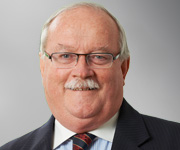WHILE the debate over public reporting of performance data in health care may continue, clinical quality and accountability is now reality in Australia.
Late last year, Healthscope became the first private health care provider to publish online comprehensive clinical performance and safety data from its 44 hospitals. Until now, Australia had lagged behind other countries such as the UK and US, where public disclosure of hospital performance has been common for almost 20 years.
Each Healthscope hospital in Australia is now rated against established industry benchmarks in falls, infections, rehabilitation outcomes, unplanned readmissions, unplanned returns to theatre and emergency department waiting times on a publicly accessible website, www.myhealthscope.com.au.
Healthscope hospitals treated more than 565 000 Australians last year. We believe that our quality outcomes are strong, and if any fall below standard, we take swift action.
While there is limited research on the effects of public reporting, one virtue is that it makes it harder for hospitals, doctors or governments to suppress unwelcome information.
Internal benchmarking was already in place to allow Healthscope hospitals to learn from each other, identify potential problem areas and develop strategies to improve their ratings. By regularly measuring and now publishing this data, we aim to further improve outcomes.
Vigorous and responsible use of the data should promote continuous improvements in all hospitals — and that can only be good for patient care.
On MyHealthscope, patients can access relevant clinical information relating to any Healthscope hospital. Doctors and other health care professionals can help patients assess the data.
The site also offers useful tips for improving safety and preventing infection, such as handwashing techniques. Consumers were involved in designing the website, to ensure the content is relevant and clear.
At the same time, it is important to recognise limitations. In some cases it may be unfair to draw too many conclusions when comparing data from two very different hospitals.
A hospital with an emergency department and coronary care unit may have higher rates of adverse events than a specialist orthopaedic hospital performing largely elective surgery, for understandable reasons. Further development of the system will consider risk adjustment.
Other commonly cited concerns include data quality, cost‒benefit, objectivity, selective reporting and gaming. Data may be misinterpreted, and areas of poor performance given undue attention. However, if we waited until our data were perfect, we would never publish anything.
The federal government developed the MyHospitals website for quality performance measurement. Data on MyHospitals had been limited to administrative data such as waiting times, with Staphylococcus aureus bacteraemia infections recently added.
The Australian Commission for Safety and Quality in Health Care and the Australian Council on Healthcare Standards have worked hard to harmonise national data, so, where possible, Healthscope collects quality indicators based on the recommendations of these bodies as well as MyHospitals. For example, we have used the standard definition for S. aureus rates since 2009 and report this indicator in the same way as the public sector.
Healthscope will continue to follow these standards so meaningful comparisons can be made as the MyHospitals website develops.
In the planning stage of MyHealthscope, there was extensive consultation with Healthscope’s 10 500 accredited medical practitioners. Support from hospital medical advisory committees was overwhelming.
The debate over private hospitals, private health insurance and private medicine has been largely dominated by economists and political ideologues. The story of clinical quality of private hospitals and private medicine is a great one yet it rarely gets “mentioned in despatches”.
I am confident MyHealthscope will be a major step towards its telling.
Dr Michael Coglin is the chief medical officer at Healthscope.
Posted 20 February 2012

 more_vert
more_vert